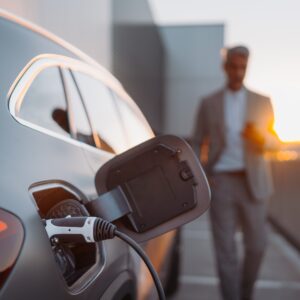
Insights
When to Prepare for EV

This August, the Electric Vehicle (EV) Council, powered by Fuels Institute, released a study on the current and prospective status of EV and charger deployment in the US market. The council’s study examines a geographic distribution of how many EVs are anticipated in market, how many chargers will be needed to support anticipated volume, and the type of charging (Level 2 or Level 3) that will be required to meet consumer needs.
What’s in the Report?
Following the passage of the Biden administration’s new infrastructure bill, the federal government will allocate funds toward building a national infrastructure to better support EV. The bill required states to individually submit their plans for how to meet the bill’s goals, and all 50 states, plus Washington D.C. and Puerto Rico, have received joint approval of their goals from the Departments of Energy and Transportation as of September 27.
To no surprise, the Council predicts that by 2030, EV sales will be highly concentrated in 15 states, with a significant concentration in California, followed by Texas and Florida. However, in all states where infrastructure planning is approved, we should expect, at a minimum, to see DC fast charging stations along every fifty miles of highway.
How Should Convenience and Energy Companies Prepare?
Julia McDermott, Senior Consultant at W. Capra, offered her perspective on strategizing for EV adoption, “Though there remains ongoing debate around how to best deploy the EV infrastructure, and although internal combustion engine vehicles will surely remain in market for a long time to come, growth of EV adoption across the U.S. remains an inevitability.” The question most retailers face is when the market will be saturated enough in their footprint to meaningfully invest in EV infrastructure.
To effectively guide the merchant landscape, W. Capra has compiled a series of key metrics to help merchants assess their own EV “tipping points”. McDermott elaborates, “To effectively employ these data-driven learnings, it’s important that EV infrastructure is incorporated into the brand’s broader strategy early. By thinking about how EV fits into a site’s geography, making informed predictions for how charging technology will develop and evolve, and assessing the impact of high-speed charging on physical site maps, retailers can produce a roadmap that combines EV acceptance with continuing plans to sell fuel.”
The journey to this roadmap begins with a workshop to creatively develop a strategy that extends beyond EV infrastructure to encapsulate broader organizational goals. There is no better time to start that journey. As the impacts to current and future store footprint and operations can be significant, W. Capra will work alongside you as you lead the charge within your organization to effectively incorporate EV infrastructure into your overall strategic roadmap.
Julia McDermott is a Senior Consultant and EV Strategist at W. Capra, assisting clients with developing and implementing strategic go-forward initiatives. For further discussion, please contact Julia at [email protected].
Related Insights
The Cost of Poor Quality Assurance for Point-of-Sale and Back Office Systems in Petroleum Retail
Quality Assurance (QA) is vital to ensure that those who use the tool daily can replicate basic functions AND access the advanced technology and process automation they were promised during sales demos.
CSP Magazine – What C-Store Retailers Need to Do to Succeed in 2025
This article, by W. Capra’s Tom Newbould as a guest author, was published in the February 2025 edition of CSP […]
Navigating the Future of Electric Vehicles Amidst Administrative Change
As we bid farewell to 2024 and welcome 2025, the future of the electric vehicle (EV) market in the US […]
The Changing Role of the CIO
It used to be that a retailer’s chief information officer would spend most of his or her time concerned with […]
Want to stay in touch? Subscribe to the Newsletter










